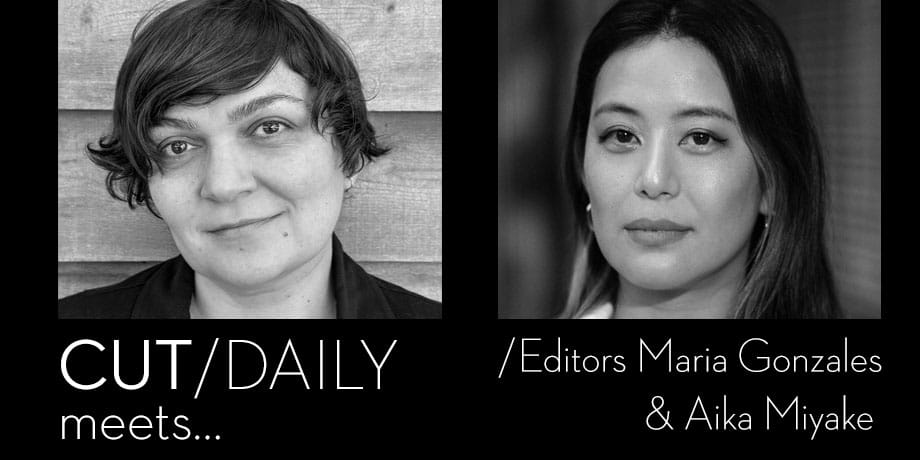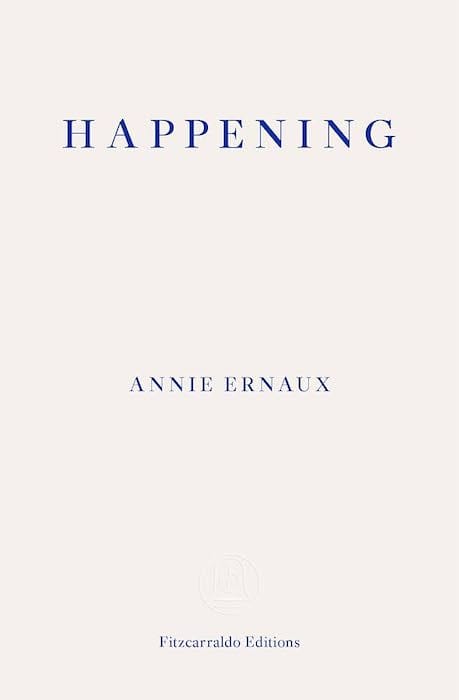#395 - Cut/daily Meets... Shōgun Editors Maria Gonzales and Aika Miyake

You are in for a treat.
In this extended edition of Cut/daily Meets... you'll get to learn from not one but two of the editors of FX's exceptionally highly-rated epic new series, Shōgun.
Those editors are Maria Gonzales and Aika Miyake, who cut the bulk of season one, with Maria editing episodes 101, 104, and 107 and Aika editing episodes 102, 105, and 108. They cut episode 110 (finale) together.
There is so much to manage in this series, from an extensive cast of characters, multiple threads of political intrigue, intimate relationship arcs and epic action scenes, not to mention working different languages and a ton of VFX.
What I loved most about everything they had to share was Aika's summary of what an incredible experience it was to collaborate so closely with another editor on a show of this scale:
Forming a trusting and inspiring friendship with another amazing editor has been truly rewarding, and I will cherish this experience forever.
— Aika Miyake, Editor
We'll start with our usual questions and then dive into the details of cutting this incredible series with a trio of bonus questions.
You can catch up on Shōgun on Disney+ today and follow Aika Miyake and Maria Gonzales on Instagram.
What’s your daily work routine?
MG - Cutting room routines were upended by Covid just like everything else in our lives. Mornings were always a good time to bond with the crew over a cup of coffee; a routine I shared with editors I assisted, so I always encouraged the same with my own crews. However, working from home has done away with these morning chats, which is particularly sad for the young people just entering the industry.
In terms of actual editing, the days unfold differently as we move through the various stages of production. While in dailies, I usually spend the morning watching everything down, pulling selects, and thinking about how the scenes should come together. Then I just cut the afternoons away.
I love this time because I feel like I’m on my own schedule. Once we start working with directors and producers, our days conform to their availability.
AM - It’s not exactly a routine, but I typically work at a standing desk with an uncomfortable chair or stool. This setup allows me to move around while editing for long hours.
When my legs become tired from standing, I'll sit in the chair, but it's uncomfortable, so I end up changing positions frequently. This is the only way for me to eliminate my back pain.
What do you now know about your work that you wish you’d known when you first started?
MG - Hmm, I’m not sure I have a clear-cut answer for this. My first job in a cutting room was almost twenty-five years ago when I started as a Production Assistant.
I spent the next several years working my way up the “editing ranks” until I finally made the jump to editor about ten years ago. It’s impossible to recount all the things I’ve learned along the way, but every job and every crew taught me some invaluable gem I will carry with me forever.
In that respect, I feel I took in whatever knowledge and opportunity that came my way when I was ready to receive it. I wouldn’t want to change anything about that experience.
AM - Editing, along with communication and collaboration with other professionals, are critical to our work. People often perceive editing as a solitary job behind the computer screen where you don’t have to interact with anyone.
However, it's crucial to know how to run your room and voice your thoughts effectively. Also, if people find you nice to be around, they are more likely to return to cutting with you.
What did your biggest professional failure teach you?
MG - I tend to be very hard on myself, and yet I don’t look on any of my professional experiences as failures. There are so many things in this industry that are out of our control I choose to focus on things I can control.
I make sure I work hard, that I’m an active member of the team and that I produce quality work.
Everything else - I can hopefully learn from and grow.
AM - I'm generally a positive person, and one of my strengths is that I don’t dwell much on failures.
I always ensure that I know which edits I prefer and have my own opinions, even if no one asks for them. It doesn’t mean you have to fight to get your way, but when there is an opportunity, I can express my preferences.
At the same time, I make a conscious effort not to remain silent when it's necessary to speak up, thus avoiding regrets later.
What’s the #1 thing that has helped you shorten your craft’s learning curve?
MG - I don’t know if there is such a thing. I’ve enjoyed moderate success and work pretty consistently, but I feel like I still have so much to learn. I encounter new editors and learn from their techniques and ideas about story on every single project.
I truly hope that never ends because if I ever feel like there’s no room for growth, I don’t know if I could continue editing.
AM - By cutting! That’s the only way to discover your preferences, strengths, and problem-solving skills. Coming from a commercial background has pushed me to learn editing in various styles, creatively address problems, and efficiently tell stories.
Importantly, it has also taught me what kind of editing I enjoy the most, and that is storytelling.
What book has helped you the most over your career?
MG - I don’t often re-read books, but it would probably be great to revisit some of the editing classics I read in film school. I’m sure I would have a whole new perspective on them now that I’ve been in the industry for a few years.
In the last couple of years, I discovered the French author Annie Ernaux, whose direct writing style I often think about when working on difficult dialogue scenes. I’ve seen her work described as underwritten, which is a word I rarely hear used when discussing scripts. The economy of language is a real art form, and in our craft we are often tasked with achieving it.

AM - I read In the Blink of an Eye by Walter Murch when I was in school. But honestly, many concepts in the book didn't make sense until I started editing films myself.
It wasn't until a few years ago, when I read Joe Walker's interview on cutting Dune: Part One, that everything he said deeply resonated with me. Finally, I felt like I could understand the language of editing.
And your parting piece of advice?
MG - Everyone in this industry is on their own journey, so don’t compare yourself to your peers. Know that working hard, giving it your all, and building lasting relationships will eventually help you succeed in the world of editing.
It may not be overnight; it never is, but your time will come.
AM - Be open to others' suggestions. I appreciate that we all bring different backgrounds and perspectives to the table. Sometimes, even if you initially doubt a suggestion, trying out new edits can be surprising.
While I believe editors serve as the final line of defence for the film's overall quality, experimenting with various edits helps us discover what works best.
Given the complexities of the series (action sequences, political intrigue, multiple character threads) what were some of the challenges and opportunities this presented as editors?
MG - This show, especially the pilot episode, gave me the opportunity to work on a wide range of scenes. In addition to building out introductions to a number of pivotal characters, this episode took me on an editorial roller coaster, which was a wonderful challenge.
I got to explore my action skills with some massive VFX sequences like the Storm Scene and the Rodriguez Cliff Rescue Scene, my dialogue skills with tense political intrigue sequences like the Toranaga vs.The Regents scene and deeply emotional scenes like the one that introduces Mariko and Fuji.
The real challenge was making sure we tonally hit the right mark on all of these scenes and make the episode feel cohesive. The key for me was to keep in mind that most of the characters we meet in the episode are overwhelmed by the feeling of being trapped in one way or another.
So, whether a scene took place in the grand palaces in Osaka or a dark cellar in Ajiro, I knew I had to maintain the type of intimacy with these characters that would allow the audience to understand their plight and connect with them.
My strategy for achieving this was to go into tighter coverage a lot faster than I would normally do it. I made sure we sat in some wides long enough to enjoy their grandeur and feel the epic nature of the show, but once we got into the meat of the scene, be it dialogue or action-driven, I didn’t shy away from jumping into close-ups and staying in them.
This strategy allowed me to build a cutting pattern which felt consistent and engaging regardless of the scene’s pace, but most importantly it “boxed in” the characters in a way that hopefully contributed to the notion that they are trapped by their circumstance.
AM - I never imagined that I would be editing an authentic Japanese periodical show in the U.S. when I left Japan in 2019. Getting this opportunity allowed me to reconnect with my roots and where I come from.
I grew up in a small town in Japan, just a 20-minute drive away from the Okazaki castle of Tokugawa Ieyasu, the model for Toranaga in the show, was born. A lot of famous Samurais are from my area, and I never paid attention, but while editing this show, I found new interest and respect toward Japanese history, culture, and our ancestors at a deeper level.
In episode five, we have an earthquake scene, and drawing from my experience of the 2011 Tōhoku earthquake in Tokyo, recreating those events and emotions was mentally challenging. Experiencing firsthand how shocking and scary it can be and remembering those who lost everything helped me bring authenticity to the scene but also put me in a very vulnerable place.
This experience helped me in crafting the emotional aftermath scene where Blackthorne reunites with Fuji. At this point in the story, they are coming back together after the fallout from Uejiro's death. Initially, the scene concluded with a wide shot of Blackthorne standing alone.
However, when I added the close-up shots of the exchange of glances between Blackthorne and Fuji, after he fixed Uejiro's rock, and ended the scene there, it evoked a profound sense of reconciliation and mutual acceptance. Something magical happened and this became one of my favorite moments in the episode.
Considering the epic nature of the series, what strategies did you employ to condense the runtime of each episode down to time? (I've heard some Eps were 'trimmed' from 100 mins to 60!)
MG - A lot of the excessive length came from the traditions and ceremonies that were an integral part of scene blocking. We had to carefully decide which gestures (usually bows) to cut out in order to speed scenes along.
Also, the articulation of the Japanese language took longer than what was estimated based on the English script, so we spent a lot of time analyzing the dialogue and carving out pieces that didn’t advance the story while making sure we maintained the poetic nature of the language and its authenticity in the process.
AM - In episode eight, I had extensive coverage, not only focusing on the main characters but also on the sub-characters. Initially, we included a lot of them in the cut, but ultimately, we had to balance the episode by trimming these elements and strengthening the core storyline.
It was challenging because we had grown attached to these characters and their stories, making it difficult to let go. However, in the end, it significantly contributed to shaping the episode, preserving all the essential beats.
Also, this episode includes Mariko and Buntaro’s tea ceremony scene, and they captured the entire tea ceremony, which lasted over 20 min in each take. I wanted to keep elements familiar to us as Japanese, and ended up with moments such as Mariko washing her hands before entering the small door and her turning the bowl twice before drinking the tea, among others.
There were many more little details in that scene, and selecting which parts to keep was quite challenging. Eventually, I had to trim it down to the length that felt just right, as they are the sub-characters helping to convey the story and emotions of Mariko and Buntaro.
As you both cut the bulk of the series and collaborated on the finale, what did that interactive process look like in terms of cutting separately, swapping notes/scenes, cutting together and keeping things consistent over the series arc?
MG - Episodes one and two were shot concurrently, so Aika and I spent quite a bit of time reviewing each other’s cuts and talking about performances, sharing our observations, and making sure we were on the same page about how the show was unfolding.
We continued that relationship on episodes four and five because we were in the same shooting block again. By the time we worked on episode ten, we knew each other quite well and had a very smooth working relationship.
I cut a lot of the editor’s cut, but was locking another episode during the director’s cut, so Aika completed that. Once we started working with Justin, we often worked on the same scenes together.
A great example of our collaboration is Yabushige’s death scene. At one point, Justin decided to completely reorganize the scene. The dialogue order completely shifted, which was tricky because there were parts in which Toranaga was sitting and parts in which he was standing, so we had to be careful with continuity.
I believe I tackled the reorder, and once that was figured out, Aika asked if she could do a pass because there were things she wanted to finesse in terms of the language. At that point, we were in such sync that I could barely tell if she made any major changes. The scene felt so natural and is a great example of our editing style blending.
AM - Adding to what Maria said, I remember seeing Yabushige’s smile just before he falls down in Maria’s earlier cut, and I really liked how Yabushige is Yabushige till the very end of him.
However, after a few rounds of feedback, that shot was removed. On the final pass, I advocated to bring it back to capture Yabushige's essence better, and I was so thrilled when Justin agreed.
Lastly, being able to edit Shōgun alongside Maria was an incredibly special experience for me. We frequently called each other while driving to or from the office, sharing lots of thoughts and ideas to shape the show.
Forming a trusting and inspiring friendship with another amazing editor has been truly rewarding, and I will cherish this experience forever.
Maria and Aika, thank you so much!
So, remember advocate for what you believe in and cut daily.

Cut/daily Complete Access
Get lifetime access to the complete Cut/daily archive of over 390 Post-Production insights, exclusive discounts and referral offers!
